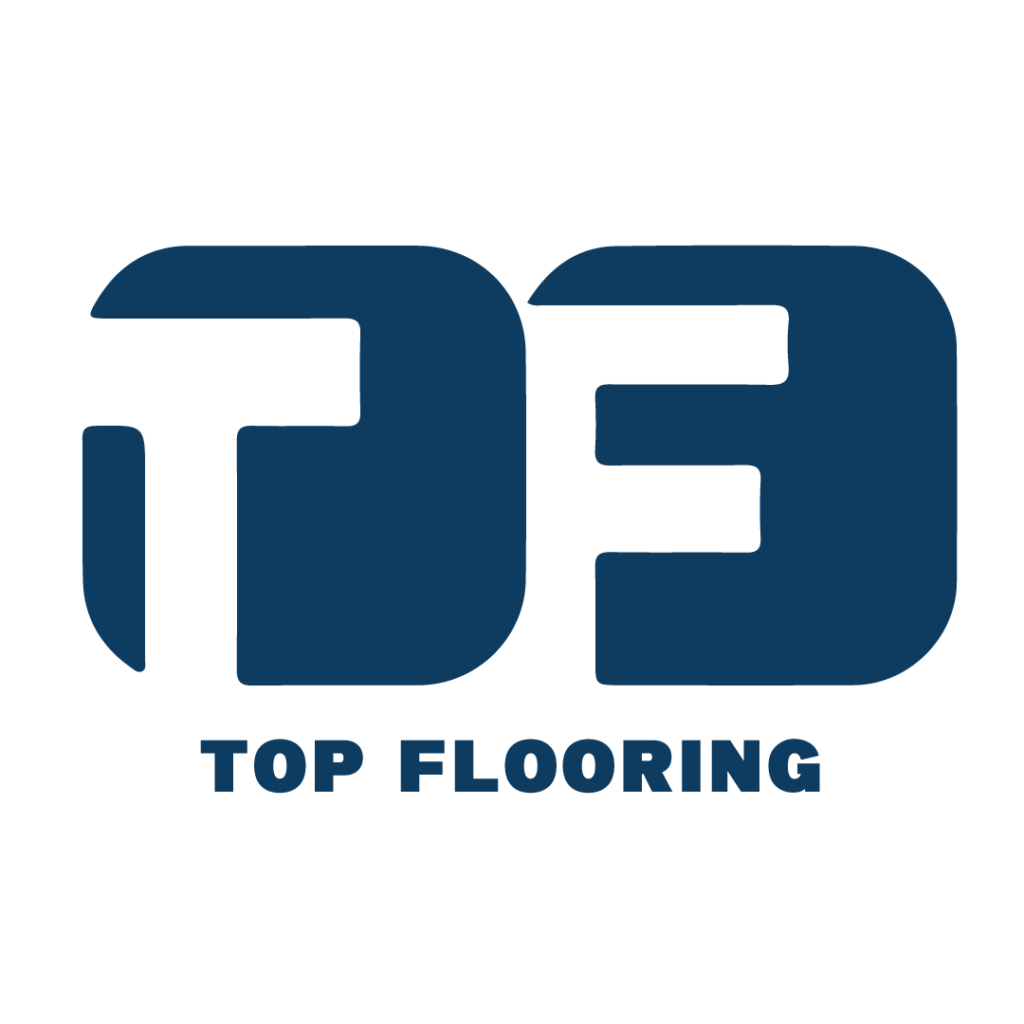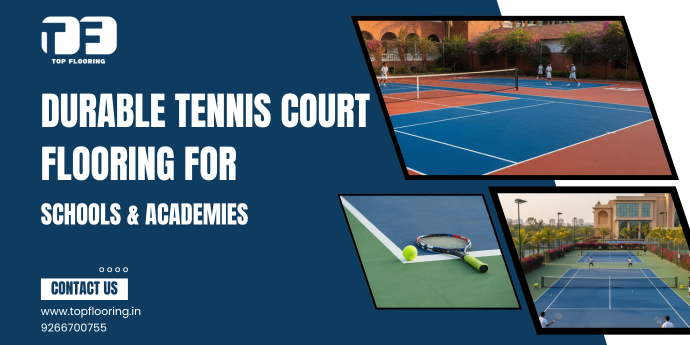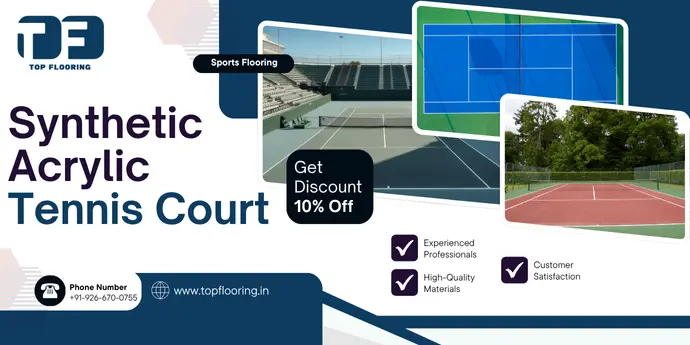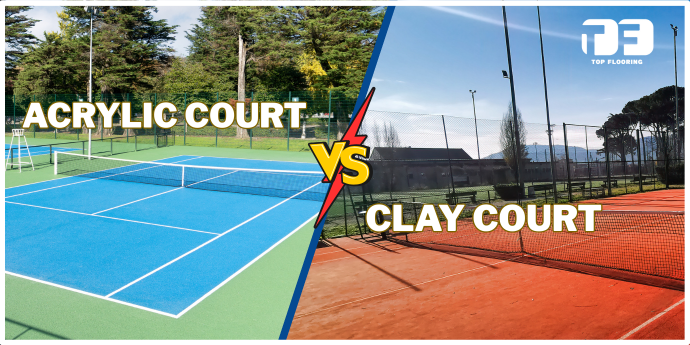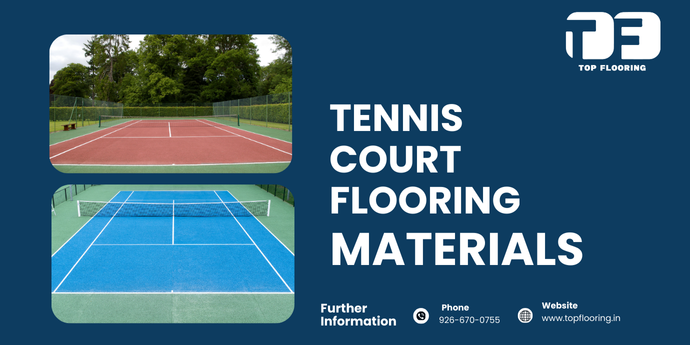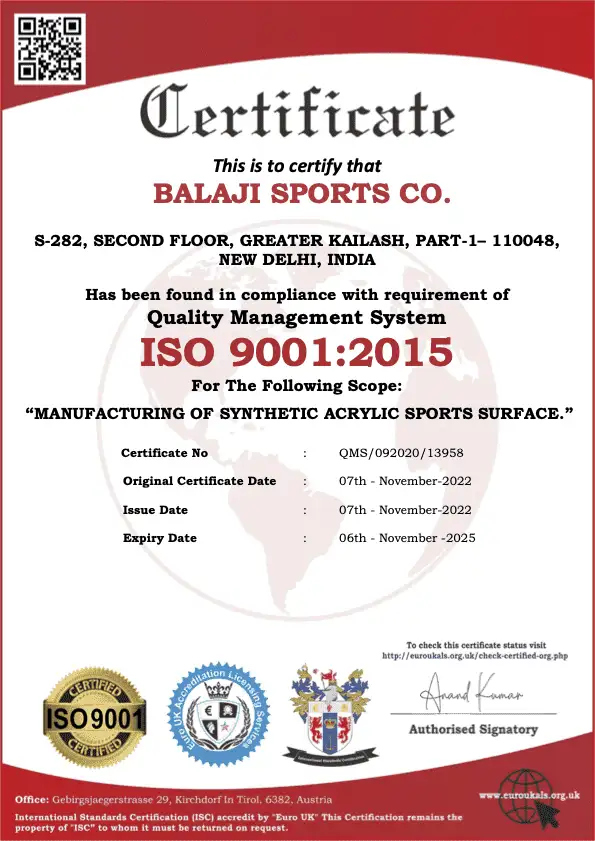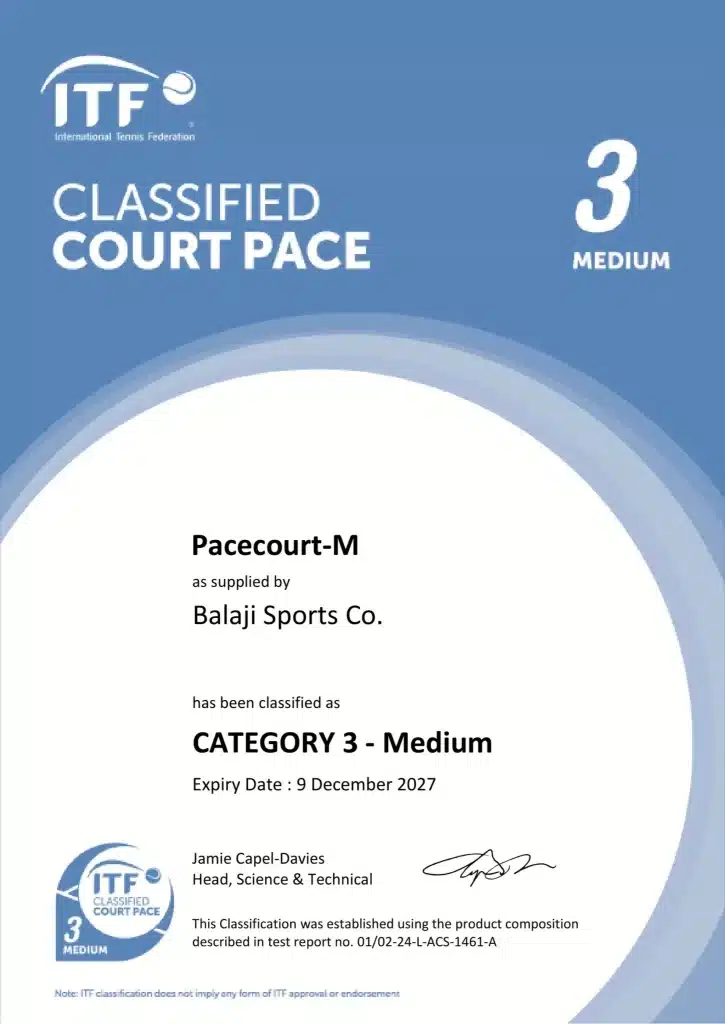Sports in India has moved from being a recreational activity to a full time career for young athletes. Among the appearing sports tennis has gained a lot of popularity in schools and academies. With India producing international level players and increasing participation at the grassroots level, the demand for professional grade tennis court flooring has gone up high.
For schools and sports academies, building a tennis court is more than just pouring concrete; it’s about investing in the right tennis court material, safety, playability and long term durability. The choice of tennis court flooring, quality of construction and expertise of tennis court builders directly impacts the court’s performance and longevity.
This blog will be a complete guide to tennis court construction in India, we will cover flooring options, costs, installation process, resurfacing needs. Whether you are planning a new facility, upgrading an old one or looking for tennis court builders who deliver ITF approved systems, this article will give you the clarity you need to make informed decisions.
Why Schools & Sports Academies Need Good Tennis Court Flooring
In schools and sports academies, the tennis court is more than just a playing surface; it’s a training ground where young athletes learn discipline, teamwork and skills that shape their future. Unlike recreational tennis courts, academic and institutional tennis courts are used more, often hosting daily training sessions, matches and tournaments. This heavy usage makes the quality of tennis court flooring an important factor in both performance and safety.
1. Consistent Ball Bounce
Poorly built tennis courts or uneven tennis court surfaces can frustrate players, limit skill development and reduce confidence. A good flooring system makes sure consistent bounce, so students can practice with accuracy and build professional level techniques.
2. Shock Absorption
Flooring with proper cushioning and shock absorption reduces strain on knees, ankles and hips during long hours of training. By stopping injuries, schools not only protect their students but also encourage continuous participation in the sport without disturbance.
3. Durability
In India, tennis courts in schools and academies have to withstand two unique challenges: high footfall and extreme weather conditions. From heating summers to heavy monsoon rains, the flooring has to keep its integrity without cracking or fading.
4. Low Maintenance, High Value
Surfaces designed with durable tennis court materials require minimal upkeep, regular sweeping, occasional washing and scheduled resurfacing every few years. This keeps operational costs low and the courts look professional and perform well.
By choosing the right tennis court surface material, institutions create long term value, protect their students and set the environment where future champions can grow.
Types of Tennis Court Flooring in India
When building tennis courts for schools and sports academies, the surface is a key factor in performance, safety and long term value. India’s climate changing from heating summers to heavy monsoons makes it important to choose the right tennis court material. Here are the four most common types of tennis court flooring used in India:
1. Acrylic Tennis Court Flooring
Acrylic is the most used option in schools, colleges and professional academies across India.
- Multi-Layered Cushion System: Acrylic tennis courts are built with a primer, resurfacer, cushion coats and color coats, topped with ITF approved line markings. This layered system makes sure comfort underfoot and reduces the risk of injuries by providing shock absorption.
- Slip Resistance: Designed to maintain grip even in slightly damp conditions, perfect for Indian weather.
- Cost Effective: The tennis court construction cost for acrylic surfaces is much lower than clay or natural grass tennis courts, making it budget friendly for schools.
- Low Maintenance: Regular cleaning and resurfacing every 5-7 years keeps the tennis court in top condition without any recurring expenses.
- Long Term Durability: Acrylic tennis court flooring resists UV damage, fading and surface cracks, making it suitable for heavy student usage.
This makes acrylic tennis court flooring the best choice for institutions that want international standard playability at an affordable cost.
2. Asphalt Tennis Court Construction
Asphalt is another common base material used in tennis court construction in India, especially for outdoor courts.
- Durability: Asphalt courts provide a solid and reliable base, often lasting many years if installed properly.
- Cost Efficient Base: Asphalt is generally cheaper than reinforced concrete, making it a practical option for budget schools.
- Sealing Requirement: Without proper sealing, asphalt surfaces may crack over time due to heat and water collection. Schools often invest in tennis court resurfacing materials to extend the life of asphalt base.
- Best with Acrylic Coatings: Most modern tennis court builders apply acrylic systems on top of asphalt, combining durability with performance oriented play.
For schools, asphalt tennis court surfacing is one of the best long term investments.
3. Clay Tennis Courts
Clay tennis courts are less common in Indian schools but are chosen by some tennis academies that want to replicate European playing conditions.
- Slow Ball Bounce: Clay surfaces slow down the game, players have to improve stamina and endurance. Good for professional training environments.
- High Maintenance: Clay tennis court requires daily rolling, watering and sweeping to maintain consistent bounce, which can be challenging for schools with limited maintenance staff.
- Not Budget Friendly: The maintenance makes clay tennis courts more expensive in the long run compared to acrylic or asphalt systems.
While clay courts offer great training benefits, they are not suitable for most schools and academies due to high maintenance demands.
4. Synthetic Grass Tennis Courts
A synthetic grass tennis court has become popular in some institutions because of its quick installation and looks like natural grass.
- Low Maintenance: No watering and no mowing required, so easy to maintain.
- Fast Installation: Schools can have tennis courts ready for play much faster than clay or asphalt constructions.
- Durability Challenges: In Indian weather, synthetic grass wears out quickly with heavy use and heat, and needs to be replaced frequently.
- Limited Professional Training Value: Good for recreational play but not for professional training.
These are good for casual play and not for serious academies training future professionals.
How to Make a Tennis Court: Step-by-Step Guide
So you’re wondering “how to make a tennis court”? Well, it’s more than just laying a surface. Professional tennis court construction companies follow a process to make sure the tennis court meets international standards, plays consistently and lasts for years. Here’s a breakdown of each step:
1. Site Preparation
- Clearing the Ground: All vegetation, rocks and debris are removed to create a clean base.
- Levelling the Ground: A perfect level of the tennis court is important for ball bounce and player safety. Even slight slopes can affect drainage and play.
- Drainage Planning: Proper slope gradients or underground drainage systems are designed to stop waterlogging during rains which can damage the tennis court and reduce its life.
Why It Matters: Poor site preparation leads to cracks, puddles and uneven bounce and schools and academies have to spend heavily on early tennis court repair near me services.
2. Base Construction
- Material Selection: Asphalt is cost effective but requires sealing while reinforced concrete provides stability and longevity.
- Layers: Depending on soil conditions and usage, multiple layers of compacted total, asphalt or concrete are laid.
- Compaction: Heavy rollers are used to compact each layer to make sure no loose spots that can lead to surface failures later.
Why It Matters: A strong base makes sure the tennis court doesn’t crack under pressure, withstands heavy player traffic and provides the base for applying quality tennis court material.
3. Application of Tennis Court Material
- Primer Coat: Concrete primer applied directly on the base to enhance fixing between the base and the next layers.
- Resurfacer Layer: This fills in minor cracks to create a smooth surface for the cushion and color coats.
- Cushion Coats: Multiple layers of cushioned acrylic are applied to provide shock absorption. This protects players’ joints and makes the tennis court surface more comfortable for long training sessions.
- Color Coats: High quality acrylic color coatings are applied for aesthetics, slip resistance and UV protection. Colors used for aesthetics and ball visibility for players and viewers.
- Line Markings: Precise painted lines are applied to mark the boundaries to meet ITF standards for school and tournament play.
Why It Matters: This layered system makes sure durability, safety and professional playability and reduces the need for frequent tennis court resurfacing materials.
4. Add-Ons
- Fencing: Keeps balls from flying out of the tennis court and is safer.
- Lighting Systems: Important for evening practice sessions in schools and academies. LED floodlights are energy efficient and popular.
- Seating Areas: Benches or stands for players, coaches and viewers.
- Additional Features: Windbreak nets, scoreboards or shade structures as per academy’s requirement.
Why It Matters: These add-ons make the tennis court usable, safe and comfortable and turns a simple court into a professional sports facility.
5. Turnkey Solutions for Schools & Academies
- Professional execution.
- ITF approved materials.
- Transparent tennis court construction cost estimates.
- Long term maintenance support
Tennis Court Construction Cost in India
The first question schools, academies and even homeowners ask is: “How much does it cost to build a tennis court?” The answer isn’t fixed because tennis court construction involves multiple variables that affect the overall cost. From the type of tennis court surface material to site preparation, each element contributes to the final cost. Understanding these factors helps schools and sports academies make informed decisions and plan investments wisely.
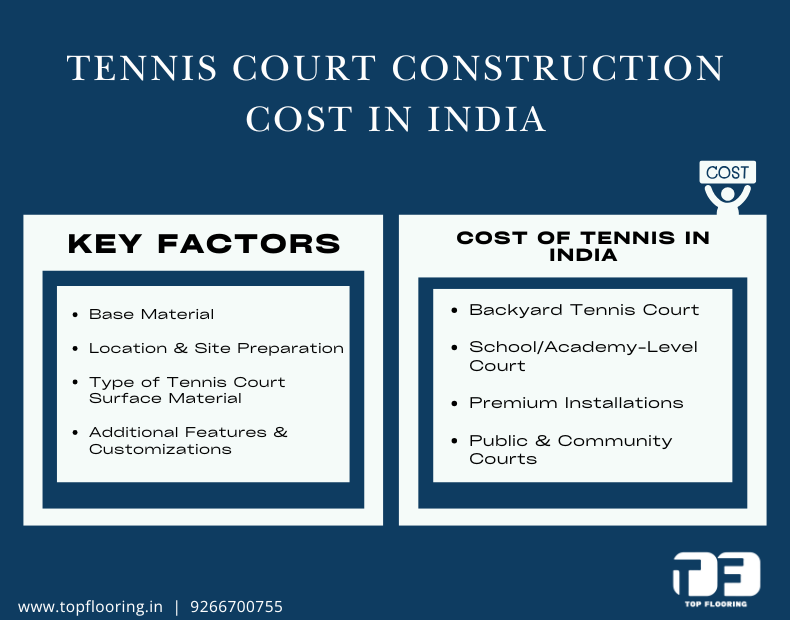
Key Factors That Affect Tennis Court Construction Cost
- Base Material
- Asphalt Base: It is more budget friendly but prone to cracking over time, especially in cities with extreme weather changes. Asphalt base may require more frequent resurfacing and sealing.
- Concrete Base: The concrete base takes higher initial investment. But extremely durable, and offers a stable platform for acrylic systems. While the upfront cost is higher, maintenance cost reduces in the long run.
- Type of Tennis Court Surface Material
- Acrylic Flooring: Most popular in India due to its affordability, slip resistance and ITF certified playability. Ideal for schools and academies.
- Clay Courts: Slower ball bounce, good for endurance training, but requires constant watering and rolling, increasing maintenance costs.
- Synthetic Grass Courts: Quick installation and low maintenance, but less durable under Indian climatic conditions.
- Premium Cushion Systems: Advanced multi layer acrylic flooring with cushioned underlayers for enhanced player comfort. These systems increase the upfront cost but improves longevity and player experience.
- Location & Site Preparation
- Leveling uneven ground and making sure proper drainage can add to the cost.
- Soil replacement may be necessary in regions with weak soil stability.
- Urban areas often involve higher labor and logistics costs compared to semi urban or rural sites.
- Additional Features & Customizations
- Fencing for safety and to stop balls from going out.
- Floodlights for evening training sessions in academies.
- Seating or viewer stands for larger institutions hosting matches.
Cost of Tennis in India
- Backyard Tennis Court
If you want a tennis court in your residence, the cost of a tennis court in your backyard includes a simple asphalt or concrete base with acrylic surface, fencing and basic line marking. - School/Academy-Level Court
Institutions looking for training and competitive play invest more in durability and ITF-approved systems.This category balances affordability with international play standards. - Premium Installations
Professional academies and elite sports clubs go for premium cushioned acrylic flooring systems. With multiple cushion layers, UV-resistant color coats and advanced drainage, these tennis courts provide the highest level of comfort and performance.
Instead of searching “tennis court near me”, schools should consult specialized tennis court construction companies that provide transparent costs and ITF-standard quality.
Why Choose Top Flooring for Tennis Court Construction in India
Among the many tennis court construction companies in India, Top Flooring is your trusted partner for schools, academies and institutions. Here’s why:
- Acrylic Systems
Top Flooring is a specialist in synthetic acrylic tennis court flooring, ITF approved surfaces for Indian climate. With years of experience in the industry, the team ensures courts that balance durability, safety and performance. - Certified Materials
Every project uses high quality, ISO certified tennis court material, from primers and resurfacers to cushion coats and line marking paints. This ensures consistency in ball bounce, slip resistance and long lasting color. - Transparent Pricing
Whether it’s a backyard tennis court or a full academy setup, Top Flooring provides clear and competitive pricing. Clients get itemized breakdown of site preparation, tennis court surface material, accessories and optional add-ons like fencing or lights. - End to End Service
From planning and how to make a tennis court consultation to installation and maintenance, Top Flooring takes care of everything. Their in-house experts ensure projects are delivered on time and within budget. - Maintenance & Resurfacing Support
Beyond installation, Top Flooring offers professional tennis court resurfacing materials and repair services. Schools and academies can rely on timely resurfacing every 5-7 years and routine repair solutions to maximize the court’s life. - Proven Track Record Across India
With projects delivered for schools, housing societies and professional academies across India, Top Flooring has a reputation for reliability and quality.
Working with an established tennis court company saves you long term and hassle free maintenance.
Tennis Court Resurfacing & Repair
When the court starts to go wrong, many administrators and coaches start searching online for “tennis court resurfacing near me” to find reliable contractors. But knowing the signs that your court needs resurfacing can help you plan ahead and avoid costly surprises.
Signs Your Court Needs Resurfacing
- Surface Cracks and Peeling
Small cracks may seem harmless at first but if left untreated they spread quickly and create uneven patches that affect ball bounce and increase injury risk. Peeling layers of old coatings expose the base and make the court more prone to water damage. - Faded or Invisible Line Markings
Line markings are essential for proper play and training. Over time UV rays, rain and frequent use cause paint to fade. When lines are unclear the court no longer meets official standards and is not suitable for practice or tournaments. - Water Drainage Issues
Courts with poor drainage develop puddles or damp patches after rain. Water seeps into the surface and causes long term structural damage and makes the court unsafe for players. Proper slope design and resurfacing solves these problems. - Loss of Grip and Ball Bounce Consistency
A worn out surface loses its texture and becomes slippery and unsafe. Players struggle to get traction and increase the risk of slips and falls. Uneven bounce affects training quality especially for young athletes learning the game.
Tennis Court Resurfacing Materials & Products
Resurfacing isn’t just about applying a new coat of paint. It’s about using specialized tennis court resurfacing materials that restore performance and durability. Contractors use:
- Acrylic Resurfacer: Fills in small cracks and smooths out imperfections to create a smooth base for further coatings.
- Cushion Coats: Provides shock absorption and comfort underfoot especially for young players in schools and academies.
- High Quality Color Coats: Adds vibrant color, UV protection and improved traction. These coatings also enhance the look of the court.
- ITF-Approved Line Marking Paint: Ensures accuracy and compliance with international standards and gives the court a professional finish.Using cheap products may save you money in the short term but it shortens the life of the court and increases maintenance costs. Schools and academies should always use certified tennis court resurfacing products for long term reliability.
On average a tennis court needs to be resurfaced every 5 to 7 years depending on usage and climate. Schools with high footfall may need it sooner, schools with low footfall may last longer.
Benefits of Acrylic Tennis Court Flooring for Schools & Academies
- Player Safety – For schools and academies the biggest concern is student safety. Acrylic tennis court flooring has multiple cushioned layers that absorb impact during fast movements, sudden stops and quick direction changes.
- Consistency – The biggest difference between professional grade courts and sub standard courts is ball consistency. Acrylic flooring gives uniform ball bounce across the entire surface giving students a fair playing field to improve their game.
- Durability – School and academy courts face daily wear and tear from regular training, inter school tournaments and community use. Acrylic surfaces are designed to withstand heavy foot traffic and aggressive play without developing cracks or fading quickly.
- Low Maintenance – For schools and academies working with fixed budgets maintenance cost is a big concern. Acrylic tennis court flooring requires minimal upkeep, just sweeping to remove dust and occasional washing with mild detergent keeps the surface looking fresh.
- Affordability – Budget plays a huge role in school and academy infrastructure decisions. Tennis court construction cost for acrylic systems is much lower than building grass or clay courts both of which require high maintenance and frequent repairs.
So acrylic is the first choice for tennis court construction companies serving schools and academies in India.
Why Schools & Academies Should Invest in Professional Tennis Court Flooring
For schools and sports academies looking to develop young talent, infrastructure is key. Tennis is a sport that requires precision, consistency and safety and these can only be achieved with professional grade tennis court flooring. A makeshift or temporary setup will not provide long term value and a good experience for both the player and the institution.
- Professional tennis court construction uses certified materials such as ITF approved acrylic systems, durable cushion coats and UV resistant colour finishes.
- Young athletes need consistent playing conditions to develop their skills. Uneven bounce, slippery surfaces or poorly marked lines can disrupt training and lower confidence.
- In today’s competitive education landscape, infrastructure quality is a major factor in parent and student choices. Schools and academies with world class sports facilities including professionally built tennis courts stand out as institutions that care for the whole child.
- For academies producing future professionals, matching facilities to global standards is non-negotiable. Professional tennis court construction companies follow International Tennis Federation (ITF) guidelines for surface pace, dimensions and safety.
Working with expert tennis court construction companies will help you offer world class facilities and attract more students.
Conclusion
Building a tennis court for schools and academies is more than a construction project; it’s an investment in the sporting future of students. A well designed tennis court reflects an institution’s commitment to safety, professionalism and quality training. From choosing the right tennis court flooring to calculating the cost to build a tennis court, every decision impacts how players perform and how long the facility will last.
For schools, the benefits go beyond physical training. A world class tennis court enhances the institution’s reputation, attracts more students and can even host inter school or district level competitions. For academies it’s a tool to produce high performance athletes ready to compete on national and international levels.
In the end a tennis court is not just concrete, paint and fencing, it’s a platform where young players learn discipline, resilience and the joy of competition. With the right flooring, expert tennis court builders and a long term maintenance plan, schools and academies in India can create facilities that will inspire generations of champions.
Frequently Asked Questions
Acrylic synthetic flooring is the best choice for schools due to its durability, safety, and low maintenance.
Yes, cushioned acrylic flooring reduces impact on joints and provides better grip for safe play.
Regular sweeping, monthly washing, annual inspections, and resurfacing every 5–7 years keep courts in top condition.
Acrylic synthetic courts are preferred for academies because they offer consistent bounce, slip resistance, and ITF certification.
The cost of tennis court flooring in India varies by location, size, and materials but generally ranges from affordable school setups to premium academy courts.
